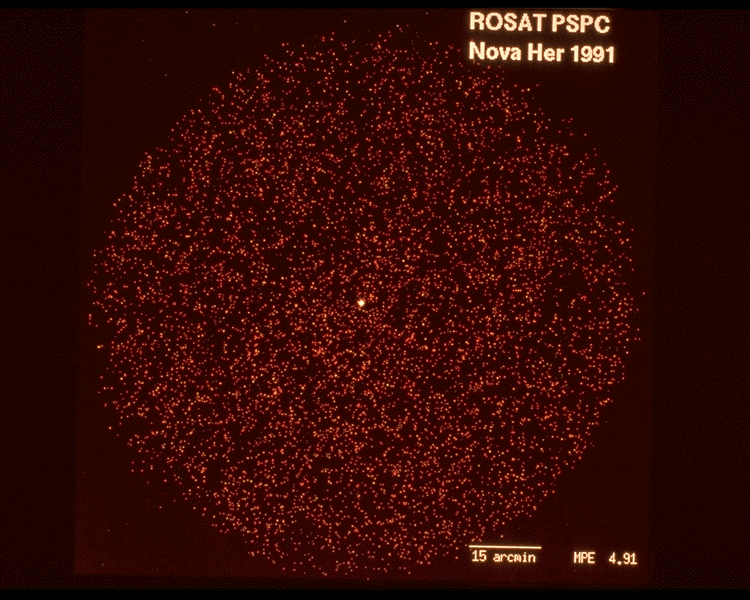Nova Herculis 1991

Image credit: Max-Planck-Institut für extraterrestrische Physik (MPE)
Nova Herculis 1991, shown in this PSPC image, is a fast, high inclination, long period nova which contains a massive white dwarf and is part of an eclipsing binary system. Novae occur as part of the evolution of a close binary system in which the stars have different masses, ie. a main sequence star and a white dwarf. Mass is accreted onto the white dwarf which eventually ignites runaway thermonuclear reactions which blow off the outer layers of the star. This particular nova (also known as V838 Her) was discovered by independent Japanese and British amateur astronomers March 24/25 of 1991. ROSAT observations were made five days after discovery and again one year later.
Curator:
HEASARC Guest Observer Facility
Please use the Feedback link if you have questions on ROSAT.

